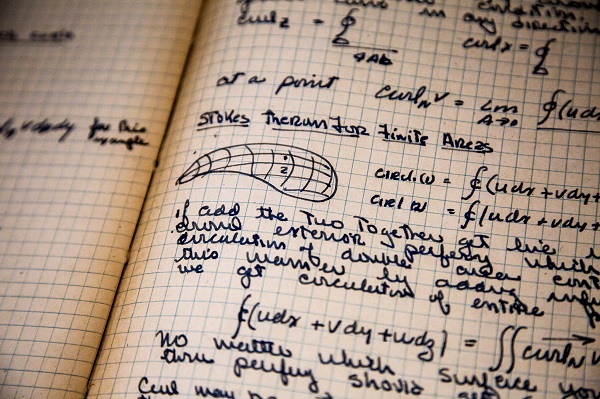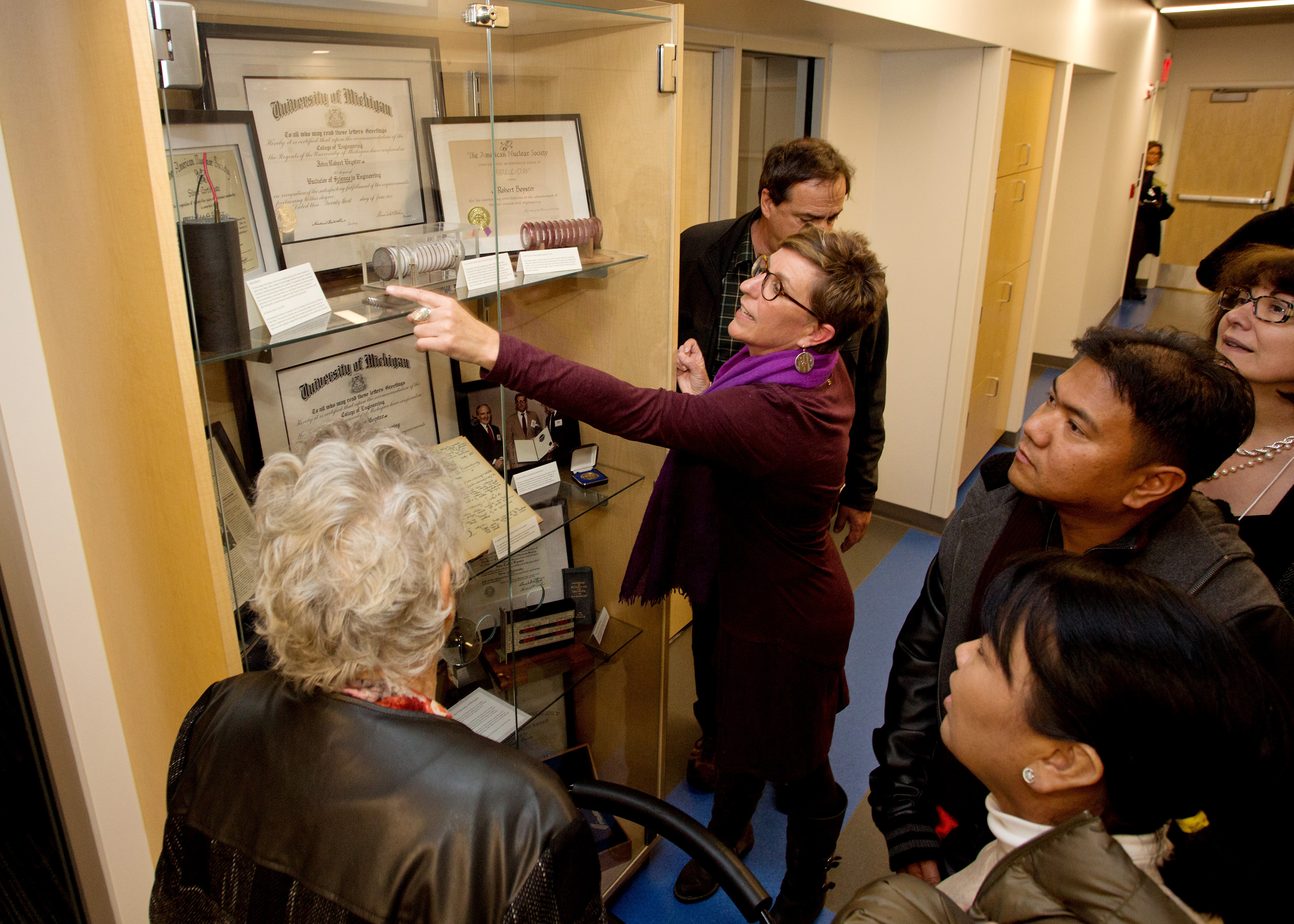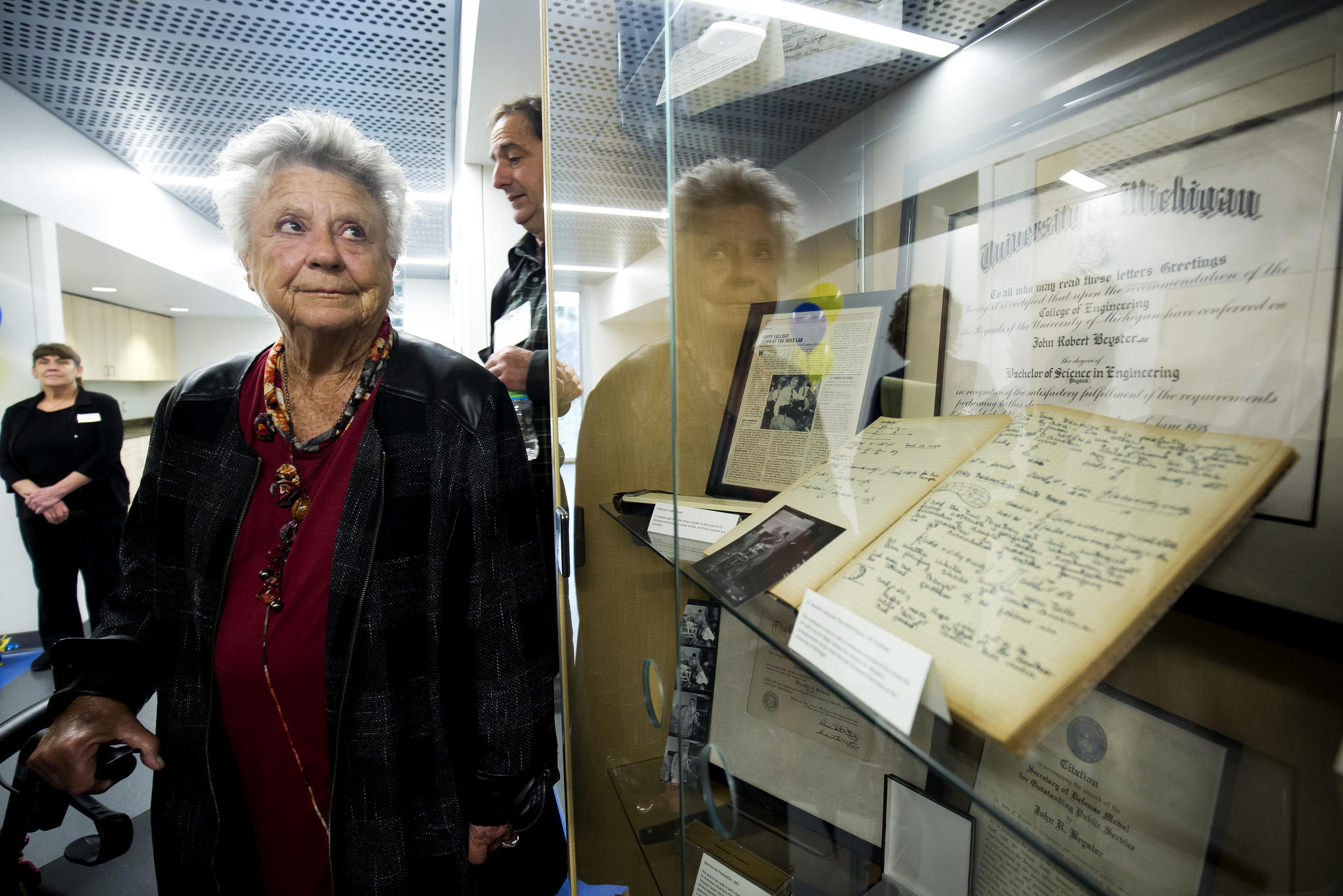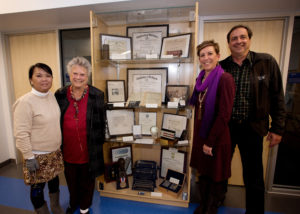The University of Michigan
Department of Nuclear Engineering and Radiological Sciences
Nuclear Engineering Laboratory
2301 Bonisteel Boulevard
Ann Arbor, MI 48109-2100
About this Collection
Throughout his life, Dr. Beyster pursued excellence in all of his endeavors. This collection features Dr. Beyster’s personal memorabilia from his years as a student scholar at Michigan Engineering, highlights from his many professional accolades, and significant SAIC innovations.
Exhibit Collection Includes:
- Award: US StratCom
- Business Week article entitled “Happy Fallout Down at the Nuke Lab”
- Book: Handbook of Mathematics for Engineers
- This handbook was used by Dr. Beyster’s father, who was a general contractor. Dr. Beyster used the handbook as a student at the University of Michigan.
- Certificate: The American Nuclear Society Fellows Certificate
- Certificate: The American Nuclear Society Silver Certificate
- Defense Special Weapons Agency Director’s Lifetime Achievement Award, Medal & Lapel Pin, 1997
- Presented to Dr. J. Robert Beyster on February 7, 1997
This rare medal was awarded by the U.S. Defense Special Weapons Agency (DSWA), a successor organization to the Defense Nuclear Agency (DNA). The DNA, whose lineage derives from the Manhattan Project that produced the first atomic bomb, carried out nuclear support responsibilities during the Cold War.
- Presented to Dr. J. Robert Beyster on February 7, 1997
- Dr. Beyster’s personal Theoretical Physics 192 notebook
- This notebook is one of a set of notebooks archived at the University of California San Diego Library that contains Dr. Beyster’s undergraduate course notes through his dissertation work at the University of Michigan.
- Equipment: Digicons
- The basic design of the Digicon, which was developed jointly by SAIC and the University of California San Diego, utilizes a magnetic-focused image intensifier tube about 6″ long and 3″ in diameter operating at approximately 20 kv potential. This potential is used to accelerate electrons from the photocathode (negative) to the anode (positive) end of the tube, where they are detected by a solid state diode array. Each diode in the array is connected to electronics to count the electrons registered in each “channel,” which is proportional to the light entering the corresponding wave-length band of the spectrometer.
- 40-Channel Digicon, 1974
- 200-Channel Glass Body Digicon, 1975
- 512-Channel Hubble Space Telescope Digicon, 1980
- Equipment: Gamma Ray Spectrometer Crystals
- These crystal holders were a key component of University of Michigan Professor of Physics Marc Wiedenbeck’s innovative gamma ray spectrometer. Two large germanium crystals were used to identify x-ray emission levels in nucleii for the first time in the 1950s. Professor Wiedenbeck presented them as a gift to Dr. Beyster in 2012.
- Equipment: Logic Timer Module
- Equipment: Spectroscopy Preamplifier, 1981
- This device was made in SAIC’s Oak Ridge, Tennessee facility in 1981 for Princeton University’s Plasma Physic Laboratory’s (PPPL) Tokamak Fusion Test Reactor (TFTR). TFTR had a large suite of plasma diagnostic systems, which included Thomson scattering diagnostic devices and spectrometers. This spectroscopy device was a component of a specific diagnostic instrumentation system.
- Horatio Alger Award, Trophy and Medal
- National Academy of Engineering Membership: Medal, Certificate and Photo of Dr. Beyster accepting membership
- Election to National Academy of Engineering membership is one of the highest professional honors bestowed upon an engineer. Dr. Beyster was elected to the membership on October 3, 1989, in recognition of his outstanding scientific and engineering contributions related to nuclear energy and national defense.
- Secretary of Defense Medal, Lapel Pin in Case, Certificate and Citation
- Slide rule in leather case
- Dr. Beyster used this slide rule as a student at the University of Michigan and through his career at SAIC, until finally replaced by a calculator.
- Underwood Standard Typewriter No. 5
- This typewriter was used by Dr. Beyster while a student at University of Michigan, and was SAIC’s first office typewriter.
- University of Michigan Degree Certificate – Bachelor of Science in Engineering (Mathematics)
- University of Michigan Degree Certificate – Bachelor of Science in Engineering (Physics)
- University of Michigan Degree Certificate – Master of Science (Physics)
- University of Michigan Degree Certificate – Doctor of Philosophy (Physics)




